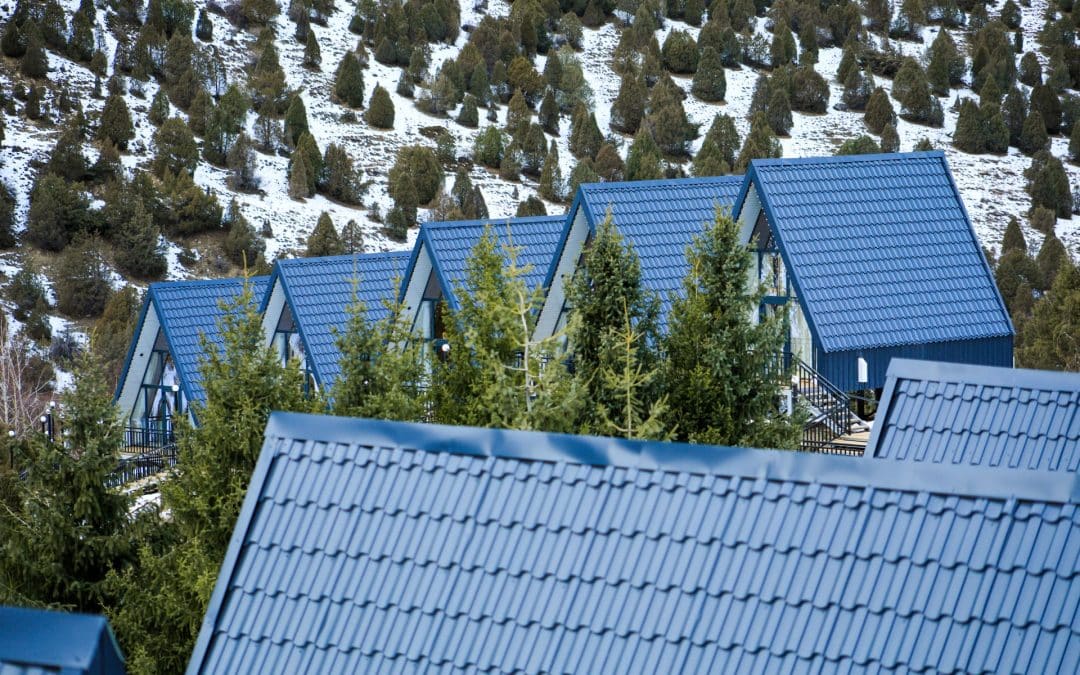Switching to a metal roof is a powerful way to reduce your commercial building’s carbon footprint. Metal roofs offer benefits that go beyond traditional roofing materials, including enhanced energy efficiency and a reduced environmental impact. As businesses focus on sustainability, it’s important to consider roofing options that contribute to a greener future.
Many commercial buildings rely on roofing materials that might not be environmentally friendly. Over time, these choices can lead to higher energy costs and a larger carbon footprint. Metal roofing provides an attractive alternative by offering superior durability and sustainability. The long lifespan of metal roofs helps reduce waste, while their energy-efficient properties lower utility costs.
Understanding the advantages of metal roofs can help you make an informed decision about your building’s sustainability practices. From energy efficiency to eco-friendly materials, metal roofs present a compelling case for anyone looking to minimize their environmental impact. In this guide, we will explore how investing in metal roofing can lead to significant benefits for your commercial property and the planet.
Benefits of Metal Roofs for Energy Efficiency
Metal roofs provide significant energy efficiency benefits, making them a smart choice for commercial buildings. One of the main advantages is their ability to reflect solar heat. Metal roofs come with reflective coatings that bounce back a large portion of the sun’s rays. This reduces the amount of heat absorbed by the building, keeping the interior cooler and decreasing the need for air conditioning.
Additionally, metal roofs help regulate indoor temperatures more effectively than traditional roofing materials. Because metal does not retain heat as much as asphalt or other common materials, your indoor climate stays more consistent. This can lead to substantial energy savings over time, as your heating and cooling systems don’t have to work as hard.
Another key benefit is insulation. Many metal roofs come with built-in insulation, further enhancing their energy efficiency. Proper insulation helps keep heat inside during the winter and prevents it from entering during the summer. This dual advantage reduces energy consumption, making your building more eco-friendly and lowering utility costs.
How Metal Roofing Materials Are Eco-Friendly
Metal roofing materials offer several eco-friendly advantages, contributing to a smaller carbon footprint for your commercial building. One significant benefit is their recyclability. Most metal roofs are made from recycled materials, and at the end of their long life, the entire roof can be recycled again, reducing waste and conserving natural resources.
In addition to being recyclable, metal roofs are extremely durable. Their longevity means fewer replacements and less waste over time. Traditional roofing materials may need to be replaced more frequently, leading to more waste in landfills. A well-maintained metal roof can last up to 50 years or more, making it a sustainable option.
Eco-friendly coatings and finishes are another advantage. Many metal roofs feature coatings that are free of harmful chemicals. These coatings not only enhance the roof’s reflectivity but also minimize pollution and runoff into the environment. Choosing metal roofing with eco-friendly finishes can help reduce your building’s overall environmental impact.
Furthermore, the production process of metal roofs has become more sustainable. Modern manufacturing techniques aim to reduce emissions and energy consumption, making metal roofs an even greener choice. By opting for metal roofing, you contribute to a cycle of sustainability that benefits both your business and the planet.
Installation Techniques for Maximizing Energy Savings
The correct installation of metal roofs is vital to maximizing their energy efficiency. One critical technique is ensuring proper insulation. Adding a high-quality insulation layer beneath the metal panels helps maintain consistent indoor temperatures, reducing the need for heating and cooling.
Another technique is the installation of reflective coatings. These coatings significantly improve a roof’s ability to reflect solar heat, decreasing the building’s cooling demands. Work with a roofing professional to select and apply the best types of coatings for your climate and building needs.
Ventilation plays a crucial role in maximizing energy savings. Proper ventilation reduces heat buildup in the attic, which in turn lessens the load on air conditioning systems during hot weather. Roof vents and ridge vents are commonly used to improve airflow, helping to regulate indoor temperatures more efficiently.
Proper sealing is also essential. Misaligned panels or improper sealing can lead to air leaks, which compromise the energy efficiency of the roof. Ensure that seams and edges are perfectly aligned and sealed to prevent any gaps. This helps in maintaining consistent indoor temperatures and reducing energy usage.
Long-Term Environmental Impact and Cost Savings
Investing in a metal roof provides long-term environmental benefits and cost savings. The durability and longevity of metal roofs mean fewer replacements, resulting in less waste and reduced demand for raw materials. This extended lifespan helps minimize the environmental impact associated with frequent roof replacements.
From a financial perspective, metal roofs offer significant cost savings. Their energy-efficient properties reduce heating and cooling costs, leading to lower utility bills. Reduced energy consumption also means a lighter environmental footprint, making metal roofing a sustainable choice for environmentally-conscious businesses.
Recyclability further enhances the environmental benefits. Unlike traditional roofing materials, which often end up in landfills, metal roofs can be fully recycled at the end of their lifecycle. This recycling capability conserves natural resources and reduces overall waste.
Choosing metal roofing also aligns with green building certifications and standards. Buildings with sustainable materials and energy-efficient systems often qualify for certifications like LEED. These certifications can provide additional incentives, including tax breaks and higher property values.
Conclusion
Adopting metal roofing for your commercial building offers numerous benefits, from enhanced energy efficiency to sustainability and cost savings. Metal roofs provide a long-lasting, eco-friendly solution that can significantly reduce your carbon footprint.
At Mike Huddleston Roofing Systems, metal roofing contractors, we specialize in metal roofing solutions tailored to meet the unique needs of commercial properties. If you’re ready to reduce your building’s carbon footprint and enjoy long-term savings, contact Mike Huddleston Roofing Systems today. Let us help you make a positive impact on both your business and the environment.

